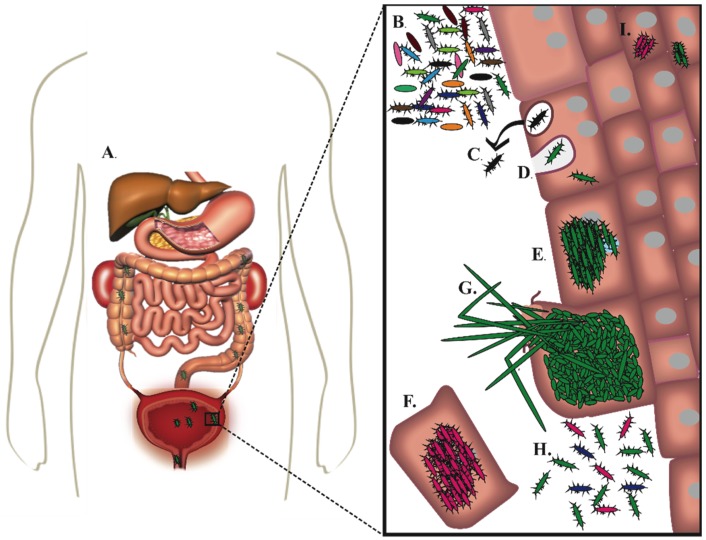Figure 1.
Uropathogenic E. coli (UPEC ) pathogenic cascade during cystitis. (A) UPEC residing in the gut are shed in the feces and colonize the peri-urethral and vaginal areas before ascending into the bladder. Upon accessing the bladder, UPEC adhere to the surface of superficial facet cells that line the bladder lumen in a type 1 pili dependent manner (B). Adherent bacteria invade into the facet cells and are either expelled back into the lumen by the cell in a TLR-4 dependent manner [19] (C) or escape from the endocytic vesicle into the cytoplasm (D). Upon invasion, bacteria replicate in the cytoplasm forming intracellular bacterial communities (IBCs) (E). One host mechanism of defense against intracellular UPEC is the shedding of urothelial cells into the urine (F), which reduces the overall number of UPEC in the bladder. During the late stages of IBC formation, filamentous bacteria dissociate from the IBC, burst out of the cell and back into the bladder lumen where they remain or can invade an adjacent facet cell (G). There are two potential outcomes of infection: chronic cystitis or resolution of infection. Uncontrolled bacterial replication in the urine occurs in mice that develop chronic cystitis (H). In mice that resolve infection, small pockets of bacteria, termed quiescent intracellular reservoirs (QIRs), form and reside in the underlying urothelium and may seed future rUTI (I).

